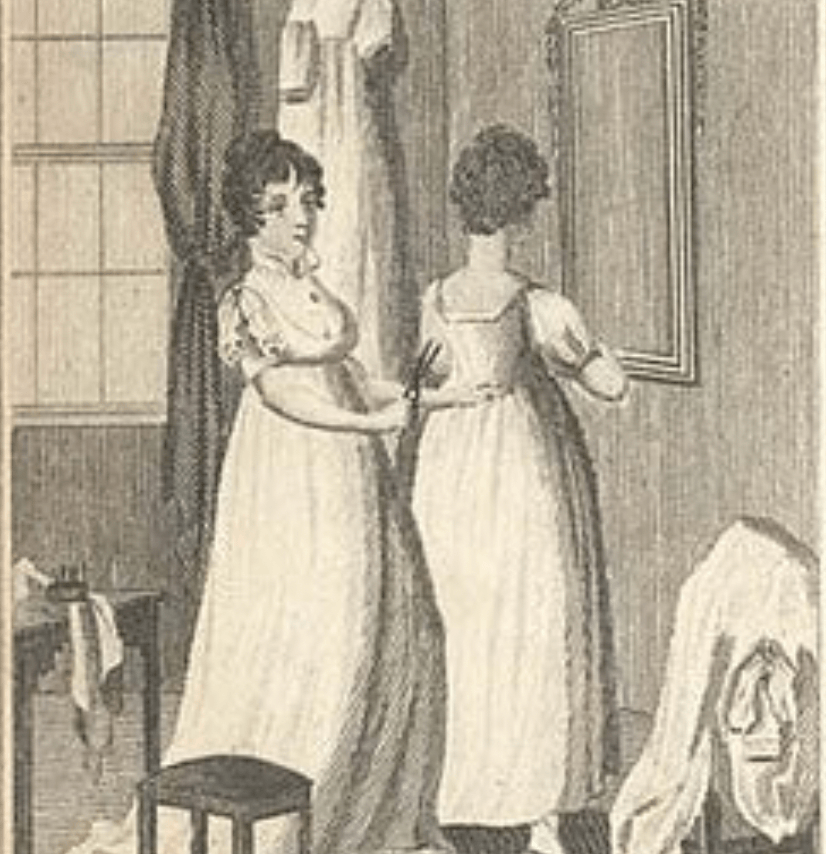The Straw Hat Maker
The Art of the Straw Hat Maker
 Fashion has always had its price tag and in the Regency was no exception. The accessory du jour was, of course, the bonnet and an army of platters and milliners kept the fashionable of the period in a numerous variety of hats and bonnets. Straw was a common medium and worn by men, women and children. Leghorn Bonnets, which you often hear of, were made in Livorno, Italy (the city was known as Leghorn in English) from straw specially treated to become a lovely bleached white.
Fashion has always had its price tag and in the Regency was no exception. The accessory du jour was, of course, the bonnet and an army of platters and milliners kept the fashionable of the period in a numerous variety of hats and bonnets. Straw was a common medium and worn by men, women and children. Leghorn Bonnets, which you often hear of, were made in Livorno, Italy (the city was known as Leghorn in English) from straw specially treated to become a lovely bleached white.
Here is an excerpt on the craft of a straw hat maker from The Book of Trades or Library of the Useful Arts, printed by Jacob Johnson in 1807.
There are few manufactures in the kingdom in which so little capital is wanted, or the knowledge of the art so soon acquired, as in that of straw platting. One guinea is quite sufficient for the purchase of the machines and materials for employing 100 persons for several months. The straw-hat-maker, represented in the plate, is employed in the making up of hats only, after the straw is braided or platted. The straw is cut at the joints and the outer covering being removed, it is sorted of equal sizes, and made up into bundles of eight or ten inches in length, and a foot in circumference. They are then to be dipped in water, and shaken a little so as not to retain too much moisture; and then the bundles are to be placed on their edges, in a box which is sufficiently close to prevent the evaporation of smoke. In the middle of the box is an earthen dish containing brimstone broken in small pieces: this is set on fire, and the box covered over and kept in the open air several hours.
It will be the business of one person to split and select the straws for 50 others who are braiders. The splitting is done by a small machine made principally of wood. The straws, when split, are termed splints, of which each worker has a certain quantity: on one end is wrapped a linen cloth, and they are held under the arm and drawn out as wanted.
Platters should be taught to use their second fingers and thumbs, instead of the forefingers, which are often required to assist in turning the splints, and very much facilitate the platting; and they should be cautioned against wetting the splints too much.
Each platter should have a small linen work-bag,, and a piece of pasteboard to roll the plat round. After five yards have been worked up, it should be wound about a piece of board half a yard wide, fastened at the top with yarn, and kept there several days to form it in a proper shape. Four of these parcels, or a score, is the measurement by which the plat is sold.
A good platter can make three score a week, and a good work will always command a sale both winter and summer. The machines are small; they may be bought for two shillings each, and will last for many years. When the straw is platted it comes into the hand of the person represented in the plate, who sews it together into hats, bonnets, &c. of various sizes and shapes, according to the prevailing fashions. They are then put on wooden blocks for the purpose of hot-pressing; and to render them of a more delicate white, they are again exposed to sulphur. Persons who make up these hats will earn half-a-guinea a week; but braiders, or platters, if very expert, will earn much more.
*****
Enjoyed this article? If you don't want to miss a beat when it comes to Jane Austen, make sure you are signed up to the Jane Austen newsletter for exclusive updates and discounts from our Online Gift Shop.


Leave a comment
This site is protected by hCaptcha and the hCaptcha Privacy Policy and Terms of Service apply.